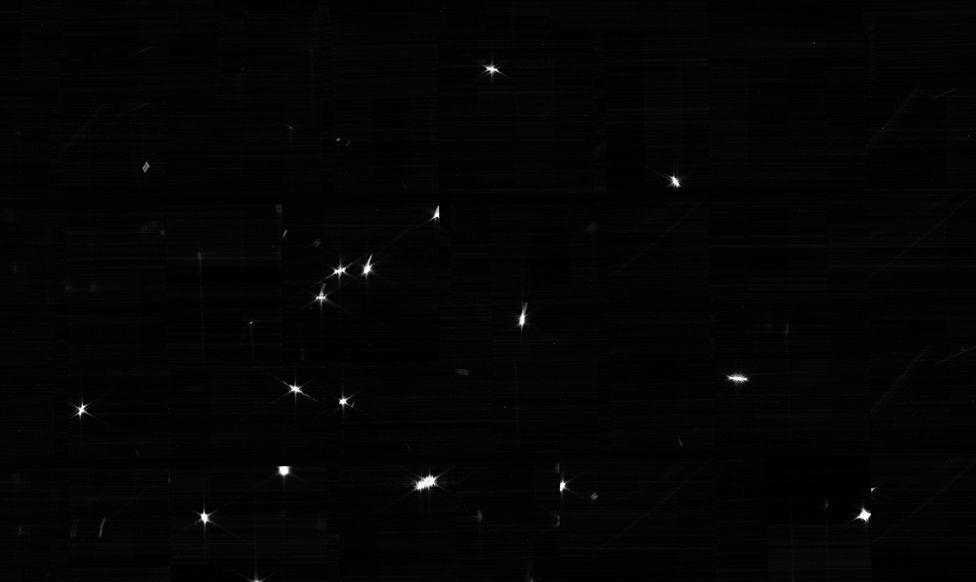On the 11th local time, NASA announced that the James Webb space telescope captured starlight for the first time and also sent back a selfie.

△ Image source: NASA
Images of starlight taken by the Webb Space Telescope show 18 bright spots scattered throughout the pitch black. These are the different images captured by the 18 lenses of the Weber Space Telescope's main mirror when shooting the same star. The Associated Press quoted NASA news on the 12th as reporting that the subject of the Webb Space Telescope this time is a star in the constellation Ursa Major 258 light-years away.
△ Selfie of the Webb Space Telescope (Image source: NASA)
NASA also released a selfie with the Weber Space Telescope, a black-and-white photograph of the 18 lenses of the main mirror taken by the secondary mirror. One lens in the photo is particularly dazzling because it is aimed at a star. In front of the main mirror of the Weber Space Telescope there is an 8-meter-long rod with a secondary mirror on it.
NASA officials say all the lenses of the Weber Space Telescope's main mirror are currently operating normally. In the coming months, the Weber Space Telescope will adjust the 18 lenses to focus on shooting in a unified manner, and it is expected to be able to start scientific observations by the end of June this year.
The goal of the Weber Space Telescope mission is mainly in four aspects: to find the first galaxies born in the universe more than 13.5 billion years ago; to study the stages of galaxy evolution; to observe the formation of stars and planetary systems; to determine the physical and chemical properties of planetary systems, including the planetary systems of the solar system; and to study the possibility of life in other planetary systems.
The Weber Space Telescope, at a cost of $10 billion, is the largest and most powerful space telescope ever built by NASA, with a 6.5-meter diameter mirror and consisting of 18 huge hexagonal lenses, equipped with 5 layers of unfoldable visors.
The Weber Space Telescope was launched from the Kuru Space Center in French Guiana on December 25 last year and entered orbit around the second Lagrange point of the Helio-Terrestrial system, about 1.5 million kilometers from Earth.
(Source: CCTV News Client)